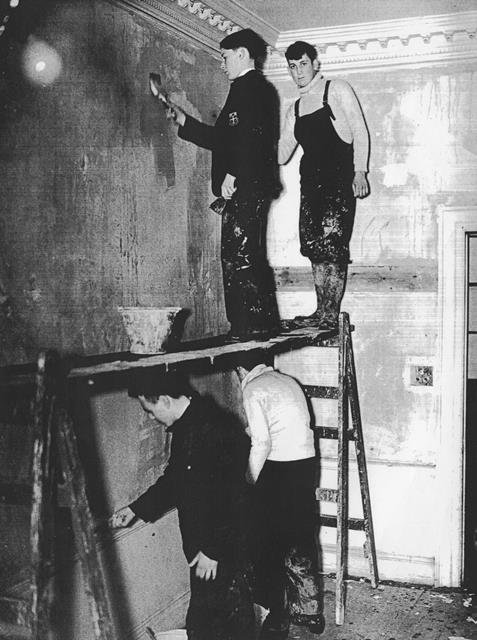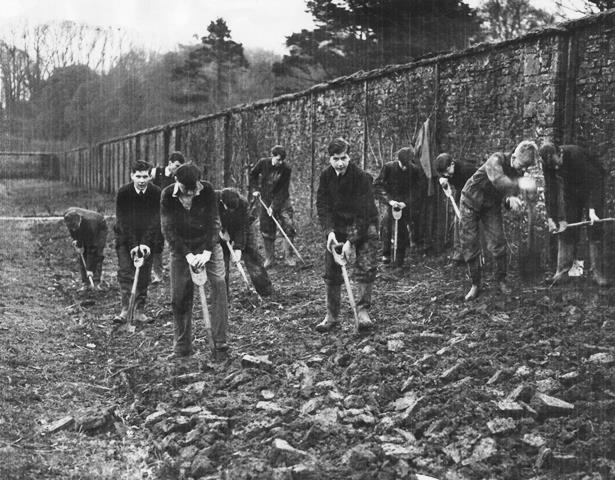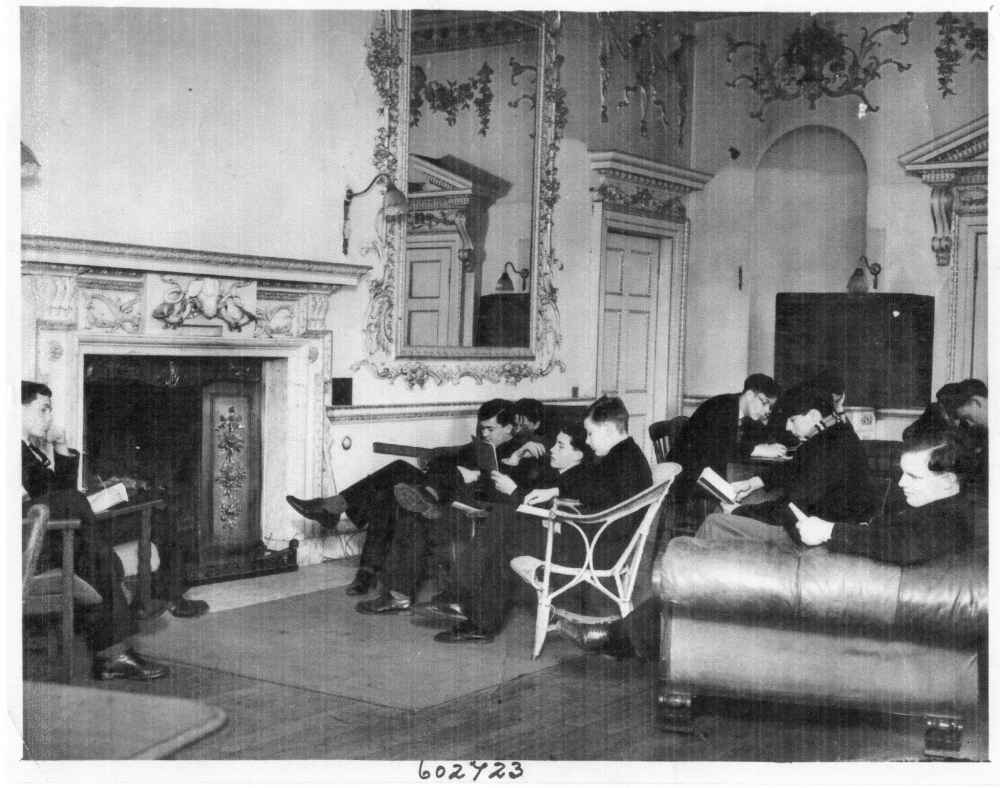Dover College in Kent, who had to leave Dover at the outbreak of war and had been housed briefly at Blundells School at Tiverton, descended on Poltimore in 1940, taking over the lease from Lord Poltimore, and remained for the duration.

The wartime archives of Dover College record that the house was in a fairly disorganised and dirty state, needing a great deal of sweeping and cleaning, and distempering of many of the rooms. This work was done by some of the former domestic staff who lived in Poltimore village, the Headmaster’s wife and the wives of the masters, while even the boys were commandeered to help.
The Headmaster, George Renwick, and his family of four children moved into the former coachman’s house in one corner of the stable yard.

The boys also worked in the kitchen gardens growing vegetables, particularly potatoes, under the watchful eye of Bill Aldridge.
Unlike the girls from Poltimore College they were encouraged to take part in the life of the village, and in the war effort. There was a Home Guard for those over seventeen; there was Scouts, apple picking and the OCT with its headquarters and parade ground in the stable yard where the corps of drums and bugles practiced hard.

Inside the house the main rooms were turned into classrooms, much as they had been during the time of Poltimore College. The Saloon was again used as a library and a common room for the Sixth Form, The Red Drawing Room a classroom and the Ballroom was used for assembly. The old Laundry in the house was converted into a chemistry laboratory. The coachhouses in the stable block still housed the generating plant and other bits and pieces and provided a draw for enthusiastic Dover schoolboys who waited to watch Bill Aldridge start up the engines, using the hook on his arm with great dexterity.
In 1942 during the so-called Baedeker raids on Exeter the cellars were used as an air raid shelter, and the boys were taught to practice sliding down ropes slung from the parapet in the event of incendiary bombs landing on the roof while they were asleep in the attic rooms.
A grim reminder of the war came when the whole College was assembled in the chapel to hear George Renwick read out the names of former pupils, some only recently left, who had lost their lives on active service.
The boys went back to Dover at the end of the summer term of 1945 – but not before they had played high jinks with the cannon balls, weighing 36 lbs each, said to date from the Crimean War, which decorated the drive near the main porch. These were dragged up to the attics and flung from the parapet (without doing any damage to life or limb) and one ended up in someone’s bed. For most of the boys it had been a good time to look back on in later years; for many of them Poltimore was the only school environment they had known, and at least one has confessed that the return to Dover was a bit of a culture shock.
Considering the hard use which the house must have endured during Dover College’s tenancy, really very little damage was done – one or two of the marble chimneypieces had got kicked and chipped, and a few fittings and a written history of the house mysteriously disappeared, but on the whole the wear and tear was no more than would have been expected.
By the time the College left, the 4th Baron Poltimore has sold the property to an Exeter timber merchant. He felled some of the trees but did little else. It was then bought by a businessman who had ideas of creating a hotel but nothing came of these plans. In the summer of 1945 the house and it’s remaining 112 acres were again put up for sale an purchased by an Exeter doctor, Richard Fortescue-Foulkes and his doctor wife Mary and almost immediately Poltimore Hospital was born.
Dover College at War by Gerald Williams on June 20, 2011









